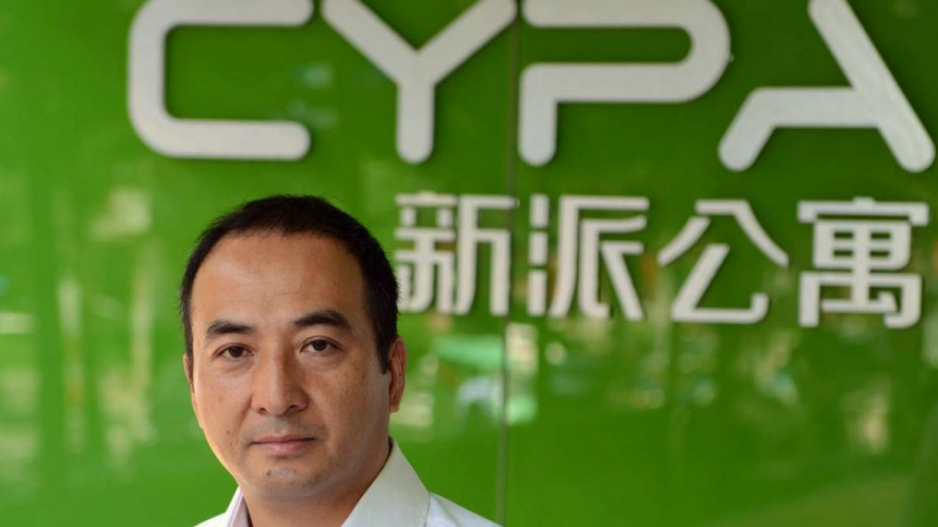A 10-minute walk from Guomao, Beijing’s central business district and an enclave for hundreds of thousand of office workers, an imposing building with a bright green-white facade stands apart from others surrounding it.
On the packed first floor is a small cafeteria space as well as a mini-gym, a yoga room, and lounge for hanging photos. Free bicycles are on offer at the entrance.
This is the flagship building of China Young Professional Apartments (CYPA) which offers long-term rental contracts for affluent, cosmopolitan young people in the city who cannot afford, or are unwilling to buy a home, but are willing to pay for a comfortable flat.
Wang Gehong, chief executive of CYPA, says 80 per cent of the tenants have an overseas education and 70 per cent are single women.
The compound offers more than a dozen different styles of living space. The smallest is a 15 square-metre room (an area 3.75 metres by 4 metres, or 3 metres by 5 metres) priced at 4,200 yuan all the way up to 140 sq metre houses priced at 25,000 yuan. A 60 sq metre room costs 8,900 yuan. Rents have risen steadily since operations began in 2014.
Wang said he is able to charge a 30 per cent premium (over nearby similar homes) due to the apartments’ design and careful vetting of tenants. The apartments boast details that might be common in the West but are rare in Beijing, where lease homes are notorious for poor plumbing and inefficient heating. To tackle these, Wang has installed sink disposal units that eliminate smell, and underfloor heating to keep the rooms warm. A mobile application can help tenants pay bills and open doors.
Wang also says “no” to nine types of tenants including smokers, pet owners, and single men older than 50. Being so choosy meant the vacancy rate was high initially, he said, but word of mouth soon spread. The 100-unit compound is fully occupied now and 40 per cent of tenants renewed their leases.
Wang, a returnee from the United States, who worked in the real estate fund industry for 10 years, harboured a dream that was far beyond being a mere landlord.
Backed by Andrew Yan, a maverick in China’s private equity sector and founder of SAIF Partners China, Wang wanted to build a long-lease rental brand in China catering to the nation’s 180 million single men and women.
Unlike the US where such operators working under the real estate investment trusts (REITS) model, Chinese companies usually use an “asset-heavy” model because of the absence of a mature reit environment.
The reit veteran instead has deployed a combination of financing models in China. For his first CYPA project near the Forbidden City in Beijing, he rented the building and operated it as a “secondary lessor”.
For the flagship Guomao project, he bought a rundown building in 2013 for 22,000 yuan per square metre using the SAIF Properties Fund that attracted several institutions and high-net-worth individuals as limited partners.
Wang is planning to go asset-lightin Nanjing and Chengdu, meaning he will export the brand and management expertise without having to buy or rent the properties.
He chose this flexible path because he has to find the best approach for the China market and his company. “In China you have to deploy multiple playbooks because this is not the United States where reits is a proven model,” Wang said.
For the buyout model he said the problem is there is lack of targets in first-tier cities amid surging property prices. Spotting the Guomao building was an accident, and he often jokes that the value of the building has risen so exponentially that if he were to sell it now, the one-off gain would be equal to several years of rent.
That’s obviously not an option for Wang, as he aims to shape the brand into something equivalent to China’s Shangri La – that name alone would denote a premium property and bring him bargaining power. The success of the two Beijing projects has already pushed him to open a third, and he is negotiating on a fourth. A massive expansion is expected in 2017.
A second two billion yuan private equity fund is already in the pipeline, Wang said. The funds will be used to buy properties in several cities that can be transformed into CYPA condominiums.
Read the original article on the South China Morning Post.




